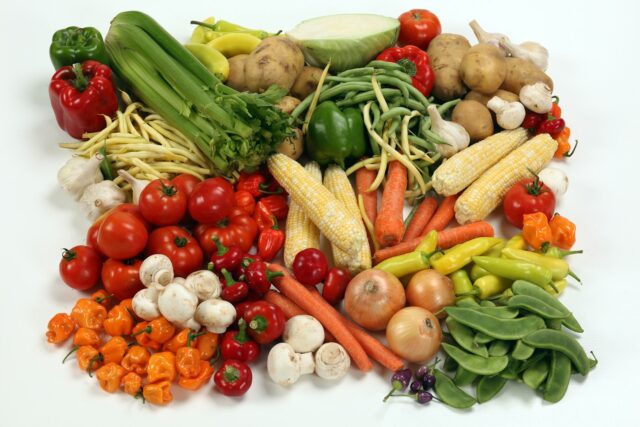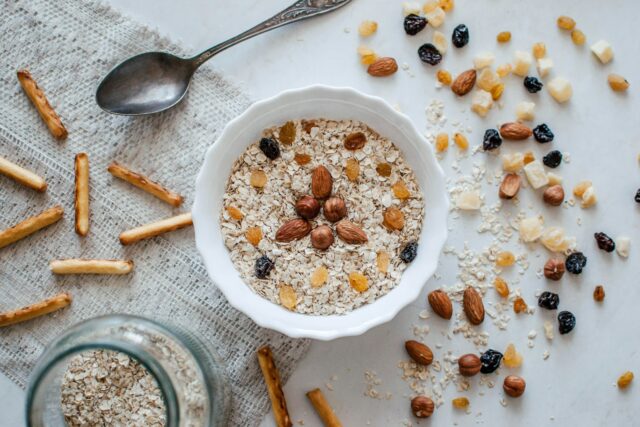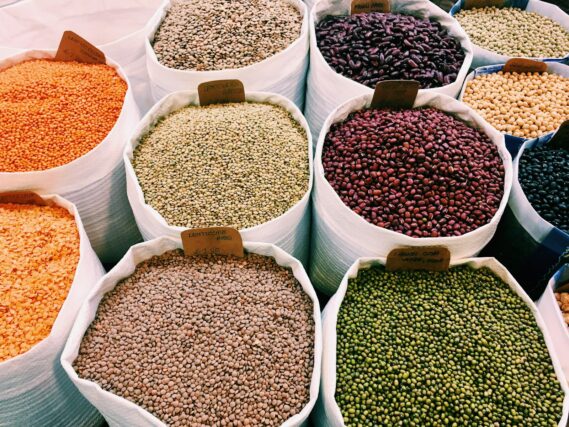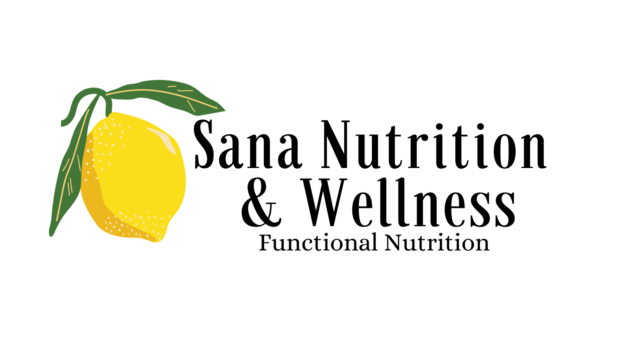Tired, bloated, and hungry all the time? Let’s fix that with fiber
(Last Updated 4/27/2025)
Most women aren’t getting anywhere near the daily fiber they need—and that’s a big deal. Fiber supports digestion, energy, mood, hormone balance, and even weight loss. And yet most of us are falling short by nearly half the recommended intake.
The good news? Hitting 30 grams a day doesn’t have to be complicated or taste like cardboard. Let’s talk easy, delicious ways to get your fiber in (without eating twigs, promise).
🌟 Why Fiber Matters (More Than You Think)
Here’s what fiber does for your body:
- Keeps digestion regular (bye, bloat and constipation)
- Feeds your gut microbiome—hello, good bacteria!
- Stabilizes blood sugar to curb cravings and crashes
- Supports hormone balance by helping detox excess estrogen
- Keeps you full and satisfied between meals
- Improves heart health and lowers cholesterol
- Boosts long-term metabolic health and weight control
Most women need 25–30 grams of fiber per day—but the average American gets just 15g. Let’s fix that.
🥦 Soluble vs Insoluble Fiber: What’s the Difference?
Soluble fiber dissolves in water and forms a gel-like substance. It slows digestion and helps manage blood sugar and cholesterol.
Found in: oats, apples, beans, chia seeds, sweet potatoes
Insoluble fiber doesn’t dissolve in water. It adds bulk to your stool and keeps things moving through your GI tract.
Found in: leafy greens, nuts, seeds, whole grains, veggies
👉 You need both types! Most plant foods naturally contain a mix of each.
Ok, now let’s get into how to easily get 30 grams of fiber in your diet every day!

🥗 High-Fiber Fruits & Veggies (Load That Plate)
Make fruits and vegetables the star of your meals and snacks; not only are they high in fiber, but they are packed with lots of nutrients to help your body function properly. Aim for half your plate at lunch and dinner. Here are some MVPs:
Fruits:
- Raspberries (1 cup) – 8g
- Avocado (1 medium) – 9g
- Pear (1 medium) – 6g
- Apple (1 medium) – 4g
- Blackberries (1 cup) – 8g
- Banana (1 medium) – 3g
Vegetables:
- Broccoli (1 cup) – 2.4g
- Brussels sprouts (1 cup) – 4g
- Sweet potato (1 medium) – 4g
- Spinach (1 cup, cooked) – 4g
- Peas (1 cup) – 8.8g
Easy Meal Ideas:
- Top oatmeal with raspberries and flax
- Add avocado slices to your eggs or sandwich
- Toss roasted Brussels sprouts + chickpeas for a fiber bomb of a side

Choose Whole Grains: Opt for whole grains over refined grains whenever possible. Swap white bread for whole grain bread, white rice for brown rice, and regular pasta for whole wheat pasta. Quinoa, oats, barley, and 🌾 Whole Grains That Work Hard
Swap out refined grains for fiber-rich whole grains to up your intake and support steady energy.
- Oats (1 cup cooked) – 4g
- Quinoa (1 cup cooked) – 5g
- Brown rice (1 cup cooked) – 4g
- Barley (1 cup cooked) – 6g
- Bulgur (1 cup cooked) – 8g
- Whole wheat pasta (1 cup cooked) – 6g
- Farro (1 cup cooked) – 8g
👉 Try this Farro Recipe or grab it on Amazon
Pro tip: Look for pastas or breads with 5g fiber per serving or more—they’re usually made with legumes or whole grains.
🥜 Snack on Nuts and Seeds
Keeping a stash of nuts and seeds on hand is one of the easiest ways to sneak more fiber into your day. They’re perfect for quick snacks, topping smoothies, tossing on salads, or just munching by the handful.
Here’s the fiber breakdown:
- Chia seeds (1 oz, ~2 Tbsp) – 10g
- Flaxseeds (1 oz, ~2 Tbsp) – 8g
- Pumpkin seeds (1 oz, ~2 Tbsp) – 5g
- Almonds (1 oz) – 3.5g
- Pistachios (1 oz) – 3g
- Sunflower seeds (1 oz) – 3g
- Sesame seeds (1 oz) – 4g
- Hemp seeds (1 oz) – 2g
Pro tip: 1 ounce is about 2 tablespoons for most seeds!
** For reference, 1 ounce is ~2TBsp
Favorite fiber-rich snack picks from Amazon:
Almond Snack Packs (portion-controlled and travel-ready)
These Hemp Seeds (amazing on smoothies and salads)
This Chia Seed Brand (perfect for overnight oats)
Sunflower Seeds (for easy snacking or yogurt toppings)
Pumpkin Seed Snacks (great on the go)

🥣 Include Legumes: The Magical Fruit!
Legumes (beans, lentils, chickpeas) are true nutritional powerhouses, packed with fiber, protein, and other essential nutrients. Plus, they’re super versatile and affordable!
Fiber content per 1 cup cooked:
- Lentils – 15g
- Black beans – 15g
- Chickpeas (Garbanzo beans) – 12g
- Split peas – 16g
- Kidney beans – 13g
- Navy beans – 19g
- Pinto beans – 15g
- Black-eyed peas – 11g
Easy ways to add legumes:
- Toss chickpeas into salads
- Add lentils to soups, stews, or pasta sauce
- Stir black beans into tacos, wraps, or burrito bowls
- Blend white beans into dips for extra creaminess (fiber + bonus protein!)
💡 Simple swap: Use half beans, half meat in recipes like tacos or chili to double the fiber without sacrificing flavor.
🥄 How to Get 30 Grams of Fiber Easily (Putting It All Together)
If you’re wondering how to actually hit that 30-gram goal without feeling like you’re eating like a rabbit, don’t worry—it’s totally doable with a few smart moves.
Here’s a simple approach:
- Start your day with a fiber-packed breakfast (like oats + chia seeds + berries)
- Add a fiber-rich snack mid-morning or afternoon (like almonds + an apple)
- Make sure lunch and dinner include at least one veggie and one whole grain or legume
- Or just use this quick formula: make sure you have 1 fruit, 1 veg, 1 whole grain, 1 seed, 1 bean = ~30g
You don’t have to overhaul your life—just layer fiber into what you’re already eating. Little changes add up fast!
🍓 High-Fiber Breakfast Ideas
Starting your day with fiber can help keep your energy steady and your cravings in check.
Some easy high-fiber breakfast ideas:
- Oats topped with chia seeds, raspberries, and almond butter (13g fiber)
- Avocado toast on whole-grain bread with spinach (10g fiber)
- Greek yogurt parfait layered with flaxseeds, berries, and walnuts (12g fiber)
- Smoothie with spinach, banana, chia seeds, and protein powder (10–15g fiber)
- Fiber-rich cereals like this High-Fiber Granola
💡 Pro tip: Always add a fruit, nuts or seeds to boost breakfast fiber even more!
🥜 Smart Snack Swaps for More Fiber
Your snack game can either make or break your daily fiber goals. Swap low-fiber packaged snacks for these simple, satisfying choices:
- Handful of almonds + an apple (7g fiber)
- Pumpkin seeds and dried apricots (8g fiber)
- Veggies (like carrots or bell peppers) with hummus (6g fiber)
- Trail mix with hemp seeds, sunflower seeds, and dried cranberries
- Chia pudding (2 Tbsp chia soaked in almond milk overnight = 10g fiber)
👉 Check out my favorite Chia Seeds and Pumpkin Seed Snacks to stock your pantry!
🥗 Easy Ways to Add Fiber at Lunch & Dinner
Lunch and dinner are prime opportunities to sneak in extra fiber—without changing your whole routine.
Here’s how:
- Add beans or lentils to soups, salads, tacos, and pasta dishes
- Choose a whole grain base like quinoa, brown rice, or farro
- Bulk up pasta night with veggies like spinach, zucchini, or peas
- Top your meals with avocado slices or a sprinkle of hemp seeds
- Swap out refined carbs (like white rice) for higher-fiber options
Meal Inspo:
- Lentil salad with spinach, tomatoes, and avocado
- Grilled chicken over quinoa and roasted Brussels sprouts
- Black bean and veggie tacos on corn tortillas
💡 Even small tweaks—like adding 1/2 cup beans or a handful of greens—can give you 6–10 extra grams easily!
🍽️ Sample High-Fiber Meal Plan
Need ideas? Try this simple, fiber-filled day:
Breakfast: Oats + chia seeds + raspberries + almond butter (13g)
Lunch: Lentil soup + avocado toast on whole grain bread (12g)
Snack: Pumpkin seeds + pear (7g)
Dinner: Roasted salmon + farro + Brussels sprouts (9g)
Daily total: ~41g fiber! 🎉
Want More Gut-Friendly Ideas?
Grab my free Mediterranean Recipe Bundle—it’s packed with high-fiber meals that are easy, satisfying, and naturally support digestion and metabolism. Here 👉 [link]
Shop My Fiber Favorites
❓FAQs About Fiber
Is fiber good for weight loss?
Yes! Fiber keeps you full, stabilizes blood sugar, and curbs cravings—which helps you eat less overall and reduces emotional snacking. Read more here.
Can I get too much fiber?
It’s possible, especially if you increase it suddenly. Add fiber gradually and drink plenty of water to help your gut adjust.
Do I need a fiber supplement?
Not necessarily! Whole foods should be your first stop. But a supplement can help fill in gaps (always check with your provider. I use this one
💛 Final Thoughts
Getting 30 grams of fiber a day doesn’t have to be complicated—or boring. It just takes a little intention and a few easy swaps.
Start small. Add a fruit here, a sprinkle of chia there. Layer in fiber over time and let your gut (and energy) catch up.
💬 Have a favorite fiber-rich food? Drop it in the comments or tag me on Instagram @sally.twellman—I’d love to see what you’re eating!
This article contains affiliate links. That means I may earn a small commission if you purchase through them—at no extra cost to you. I only share what I truly use and love. Thanks for supporting my work!
Need support in changing your habits to support health goals and get to the root of your health and digestive issues? I’m here to help! Check out my Heal Your Gut Naturally Guide: IBS Relief Blueprint
This article contains affiliate links. Rest assured, I stand behind all the products recommended. These links support the creation of valuable content at no extra cost to you. As an Amazon Associate, I earn from qualifying purchases. Thank you for your support




